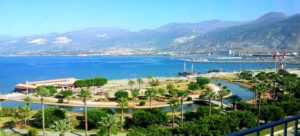Hatay
Hatay, which can also be called the cradle of civilizations, is located in geography where Western and Eastern culture is blended and societies exchange culture profusely.As a center of trade and transit due to its geographical location, Hatay embraces people from many religions and faiths in the past and present. Currently, many mosques, churches, synagogues are performing their duties together.The first settlement in Antioch, which has a history of approximately 2300 years, was established in M.
He. It is estimated to extend to 8000. The city was founded by Seleucid commanders who shared the Empire after Alexander’s death.Later, the Parthians, Sassanids, Byzantines, Abbasids, Tolunoğulları, Aksites, Hamdanoğulları, Seljuk, Crusader and Mamluk came under their rule. During the Egyptian campaign of Yavuz Sultan Selim passed under Ottoman rule. In 1937, The Independent Hatay State was established and in 1939 it was attached to the Republic of Turkey.Hatay is one of the most important and oldest residential areas in Turkey. Most recently madeaccording to archaeological studies, its history dates back to between 100 thousand and 40 thousand BC.
There are findings that Hatay was the third-largest city in the world after Rome and Alexandria at the time of the Roman Empire.The world’s first Olympic event took place in the city of ‘Daphneia’ (Laurel) in 195 BC, is mentioned in historical sources.The construction of the city of Antioch, which was ruled by civilizations such as Akat Principality, Hittite, Egypt, Urartu, Assyria and Persians, took place in 300 BC. The city, in turn, was ruled by the Roman Empire, the Umayyad, and Abbasids, the Byzantine and Mamluk States.The Assembly of the Republic of Hatay was established right next to the Asi River passing through the center of Antioch, which opens its doors to those who want to visit today.
PLACES TO SEE IN HATAY
Asi River :
The biggest feature of the Asi River is that it flows upside down. It gets its name from this feature. The Asi River has also been home to many mythological stories.
Hatay Archaeological Museum :
Hatay Archaeological Museum or Antioch Archaeological Museum is an art museum where artifacts from the ancient period are exhibited. As of December 28, 2014, the museum has the largest mosaic display area in the world.
Titus Tunnel:
With a length of 1380 meters, an average height of seven meters and a width of six meters, it attracts visitors to Samandag as one of the longest man-powered tunnels to prevent the ancient port from filling with alluvium. It is said to have been opened by a thousand prisoners with their hands.
Habibi Neccar Mosque :
It was used as a Pagan temple in Roman times. During the Byzantine period, it was converted into a church. It started to serve as the first mosque in Anatolia with the entry of Islam into Anatolia.
Monastery Of St. Simon (St. Simone Abbey) :
The monastery is located between Antioch and Samandag, m.S. 6. made in the century.Hatay is one of the most important and oldest residential areas in Turkey. According to the latest archaeological studies, its history dates back to between 100 thousand and 40 thousand BC.There are findings that Hatay was the third largest city in the world after Rome and Alexandria at the time of the Roman Empire.
St. Pierre Church :
St. Peter Hz. He is one of the Twelve Apostles of Jesus and comes to Antioch to spread his religion. M.S. Between 29-40, he held his first religious meetings in the cave, at the site of the present church. The congregation that attended the meetings was called “Christians” for the first time in history, and this is, in some views, the first Christian Church.Crusaders who came to the area in the Twelve and thirteenth centuries build the front facade of the church. The church is declared a place of pilgrimage by the pope in 1983.
Besikli Cave :
Tünel I, located near Çevlik ruins, samandağ District of Hatay, Turkey. He.It was built in the 1st century. The Roman Emperor Vespasian ordered the construction of a tunnel that would circumnavigate the city, thus changing the direction of the currents, in order to protect it from life-threatening floods and floods by descending from the mountains. Construction I.S.Begun in 69, I.S.It was finished in 81 by his successor and his son Titus. Roman Legions and slaves worked in the construction of the tunnel.
The tunnel, which is completely carved into the mountain, is 380 meters long, 7 meters high and 6 meters wide. According to the entrance of the tunnel on the sea side 100 meters away on the right side of the Gable cave, the largest and most famous of the rock tombs, there are twelve tombs in sections. The tombs are separated from each other by walls. These stone tombs are in sections connected by stone columns and arches and are descended from top to bottom again by stone stairs. The columns, column heads, levels and motifs partially adorning the upper cover were made in accordance with the originals in the sections where the doors were opened, which were formed by carving the rocks.


